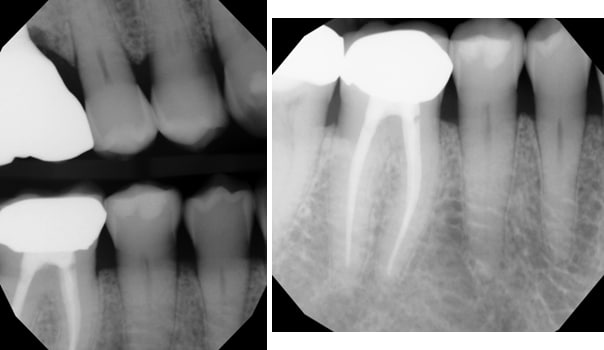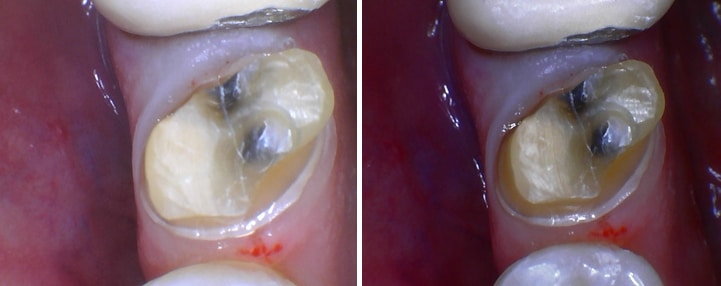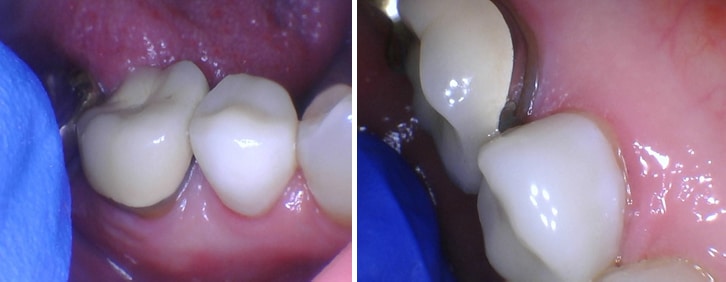Understanding Cracked Tooth Syndrome
Cracked tooth syndrome (CTS) is a dental condition where a tooth has a crack that is too small to show up on X-rays, or is under the gum and challenging to identify. This condition can lead to a range of symptoms, from mild discomfort to severe pain, especially when biting or chewing. The causes of CTS are diverse, including:
- Bruxism: Chronic teeth grinding can cause stress fractures in teeth.
- Trauma: Injuries from accidents or sports can crack teeth.
- Large Fillings: Extensive restorations can weaken the structure of a tooth.
- Chewing Hard Foods: Habitually chewing ice, hard candy, or nuts can lead to cracks.
- Age: Teeth naturally weaken with age, making them more susceptible to cracks.
Signs and Symptoms of Cracked Tooth Syndrome
Identifying cracked tooth syndrome can be tricky because the symptoms can vary widely. However, common signs include:
- Pain when chewing or biting: The pain may come and go, often triggered by certain foods.
- Sensitivity to temperature: Increased sensitivity to hot or cold drinks and foods.
- Swelling around the tooth: Swelling of the gums around the affected tooth.
- Intermittent pain: The pain may not be constant and can be hard to locate.
The Importance of Early Detection and Treatment
Early detection of a cracked tooth is crucial to prevent more severe dental issues. If left untreated, a cracked tooth can lead to:
- Infections: Bacteria can enter through the crack, leading to infection or abscess.
- Tooth decay: The crack can facilitate the buildup of plaque and decay.
- Loss of tooth: Severe cracks can lead to the tooth breaking or requiring extraction.
Porcelain Restorations: The Ideal Solution
One of the most effective treatments for cracked teeth is the use of porcelain restorations. Porcelain restorations include crowns, inlays, and onlays, which are custom-made to fit the damaged tooth perfectly. Here are some key benefits of using porcelain restorations:
- Strength and Durability: Porcelain is a robust material that can withstand the forces of biting and chewing, providing long-lasting protection for the damaged tooth.
- Aesthetic Appeal: Porcelain restorations are designed to match the color and appearance of natural teeth, ensuring a seamless and natural look.
- Protection and Preservation: Porcelain crowns and onlays encase the entire tooth, protecting it from further damage and preventing the need for extraction or dental implants.
- Biocompatibility: Porcelain is well-tolerated by the gum tissue and does not cause allergic reactions, making it a safe option for most patients.
- Minimally Invasive: Porcelain restorations often require less removal of the natural tooth structure compared to other restorative options, preserving more of your natural tooth.
The Procedure: What to Expect
Getting a porcelain restoration typically involves the following steps:
- Diagnosis and Treatment Planning: Your dentist will perform a thorough examination, including X-rays, to assess the extent of the crack and determine the best course of action.
- Tooth Preparation: The damaged tooth is prepared by removing any decay and shaping it to fit the porcelain restoration.
- Impression and Fabrication: A digital scan/impression is taken during your appointment, and the crown is designed and fabricated in the dental office.
- Fitting and Bonding: Once the porcelain restoration is ready, your dentist will check the fit and color, make any necessary adjustments, and then permanently bond it to your tooth.
Maintaining Your Porcelain Restoration
With proper care, porcelain restorations can last many years. Here are some tips to ensure their longevity:
- Good Oral Hygiene: Brush twice a day and floss daily to keep your teeth and gums healthy.
- Regular Dental Check-Ups: Visit your dentist regularly for cleanings and check-ups to monitor the condition of your restorations.
- Avoid Hard Foods: Be mindful of chewing hard foods that can damage your restoration.
- Wear a Night Guard: If you grind your teeth, a night guard can protect your restorations from damage.
Conclusion
Cracked tooth syndrome can be a painful and frustrating condition. With timely diagnosis and you can preserve your natural teeth and maintain a healthy, beautiful smile. If you suspect you have a cracked tooth, get evaluated immediately. Remember, early intervention is key to preventing more severe dental issues and ensuring the longevity of your teeth.
Case Study:
69 year old female presents to the office with a chief complaint of “Every time I bite down on this tooth it is bothering me. I have constant ache and pain present in just this one particular tooth and points to her lower right 2nd premolar.”
Intraoral exam shows a failing occlusal resin restoration with mesial and distal marginal ridge fractures. Radiographs shown below showing no obvious signs of root fracture, periodontal pocketing or bone loss. Tooth responds normally to cold testing, and normal perio probing depths.


Discussion with patient about potential need for root canal therapy if the fracture line extends into the nerve chamber. Tooth will be prepared for a full coverage porcelain restoration and temporarily cemented to rule out any nerve involvement and reduction in symptoms. Patient’s tooth was prepared for full coverage porcelain restoration and placed in temporary for 6 weeks to rule out symptoms. After 6 weeks of no post operative symptoms, patient returned for final crown to be chemically bonded and patient remains symptom free!


With frequent dental visits, radiographs and thorough examination, your dentist can identify teeth with fractures before they are symptomatic and can help save teeth!
Dr. Ross
Adler Advanced Dentistry – Call and Schedule for a routine checkup – 303-449-1119
